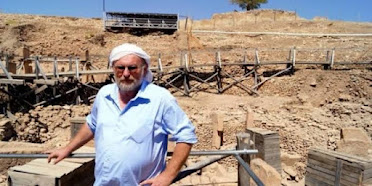A Discovery in 1963:
During excavations in southeastern Turkey in 1963, researchers stumbled upon ancient ruins they initially thought were from the Middle Ages. These findings were largely dismissed at the time and not investigated further. However, when German archaeologist Klaus Schmidt revisited the site in 1994, he realized that this was far more than a simple medieval structure—it was a massive temple complex.
Monumental Blocks:
Schmidt’s discovery consisted of colossal megalithic blocks, some reaching 6 meters in height and weighing up to 50 tons. The realization that these structures dated back to prehistoric times proved Göbekli Tepe to be a discovery that could alter the course of history.
The Enigmatic Past of Göbekli Tepe
Ignored by Academia:
Carbon dating places Göbekli Tepe between 9,500 and 8,200 BCE, making it one of the oldest known human-made structures. Despite this, the academic world overlooked it for years. Even today, Göbekli Tepe is scarcely mentioned in many history books, which tend to start humanity’s story of civilization with the Sumerians, relegating earlier eras to the hunter-gatherer phase.
Hunter-Gatherers or an Advanced Civilization?
The intricate carvings on the enormous stone blocks at Göbekli Tepe are interpreted by some scholars as mere depictions of local fauna. However, Klaus Schmidt and other researchers argue that the site was created by a complex society for specific purposes, far surpassing the capabilities of hunter-gatherers.
Göbekli Tepe’s Mysteries and the Vulture Stone
The Meaning of Symbols:
In 2017, chemical engineer Martin Sweatman and Dimitrios Tsikritsis suggested that the carvings on the Vulture Stone at Göbekli Tepe were more than simple depictions. They believed the symbols referenced astronomical events and symbolized a cataclysm. According to their findings, the carvings of animals and star-like symbols might represent a meteor impact.
An Ancient Monument?
Sweatman and Tsikritsis proposed that the Vulture Stone symbolizes one of the greatest catastrophes humanity faced after the last Ice Age. This disaster likely caused global floods, fires, and electric storms, leading to the extinction of many species.
Underground Cities and Ancient Belief Systems
The Derinkuyu Underground City:
Cappadocia’s famous underground city of Derinkuyu has a history stretching back centuries, though its creators remain unknown. It is believed that this city served as a refuge during catastrophic events when surface living became impossible.
Zoroastrianism and Ancient Myths:
Many cultures worldwide feature stories of seeking refuge underground during devastating calamities. Zoroastrianism, for instance, tells of a prophet named Yima, who was warned of a coming great winter and instructed to build an underground city to survive. Yima placed people and animals in this shelter, ensuring survival through the catastrophe.
Göbekli Tepe and Underground Cities’ Contributions to History
Göbekli Tepe and underground cities like Derinkuyu reveal hidden layers of history. These structures guide researchers in uncovering the secrets of ancient civilizations and offer insights into the wisdom of early humans.
Although the stories surrounding these sites are often steeped in mysticism due to the limited scientific understanding of their time, they convey the struggles, observations, and survival efforts of ancient societies.
The physical presence and narratives of places like Göbekli Tepe and Derinkuyu may point to these great disasters, passed down through generations. Accumulated over centuries, this knowledge might reflect humanity’s instinct to preserve warnings for future generations.
The integration of such structures, particularly Göbekli Tepe and Cappadocia’s underground cities, with myths highlights a critical truth: Ancient people sought not only to understand their world through observation but also to leave messages for the future.
The Legacy of Göbekli Tepe and a New Perspective in Science
Today, the scientific community increasingly acknowledges that sites like Göbekli Tepe and underground cities were not built solely for worship or religious purposes but perhaps to preserve memories and lessons from catastrophic events. Symbols such as the Vulture Stone at Göbekli Tepe demonstrate how ancient societies observed astronomy and natural phenomena and built structures accordingly.
Moreover, the extensive network and large-scale settlements of underground cities hint at the occurrence of catastrophic events so severe that surface living was no longer viable. In regions like Cappadocia, people might have constructed these deep refuges for protection.
Göbekli Tepe, Derinkuyu, and similar structures serve as ancient storytellers, providing clues about humanity’s history. Excavations and studies in these areas illuminate the origins of civilization and the catastrophes of the past while showcasing the survival strategies and wisdom of early communities.
Though we may never fully understand why Göbekli Tepe was built or who first founded the underground cities, these structures stand as enduring evidence of humanity’s creative power and will to survive. The Vulture Stone at Göbekli Tepe, as a symbolic memory of a great disaster, invites us to delve into the ancient past and uncover its mysteries.
Understanding these sites encourages a fresh perspective on both our history and the world today.
